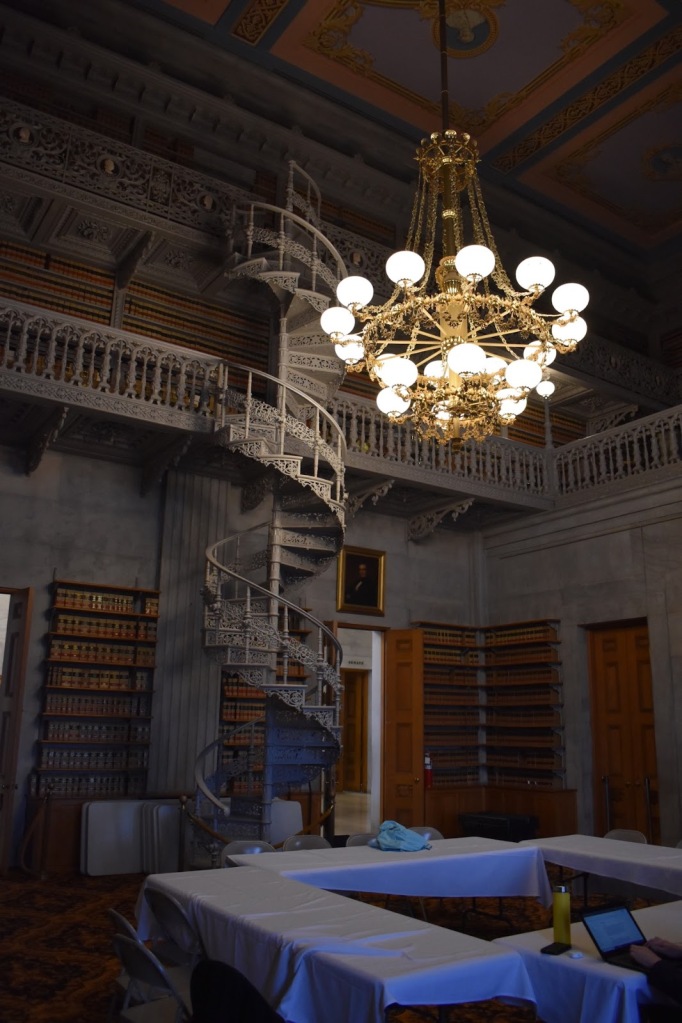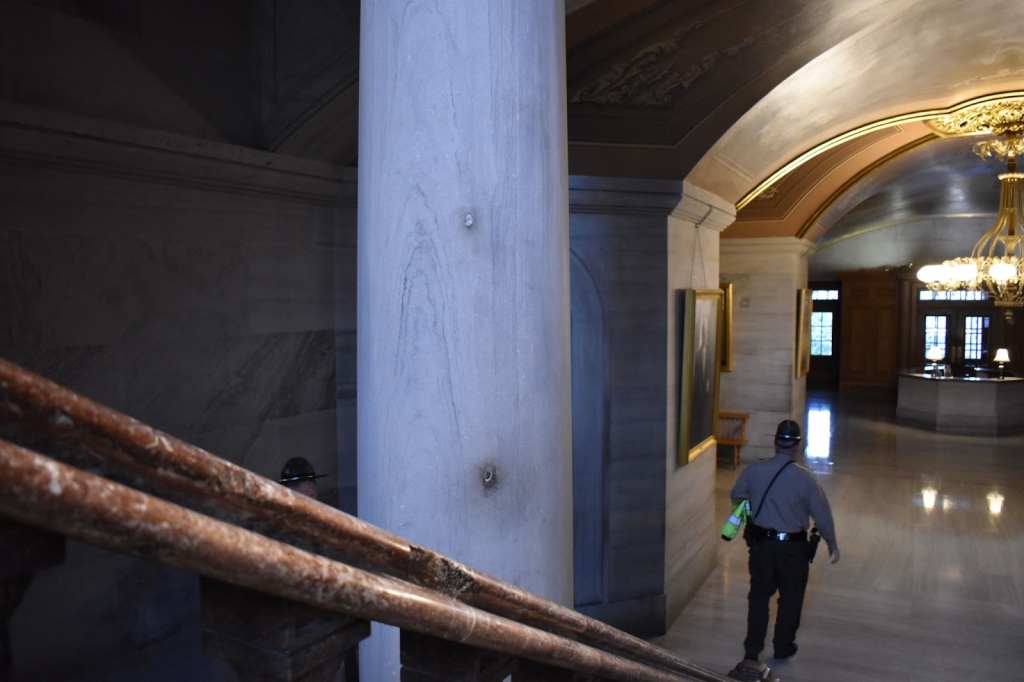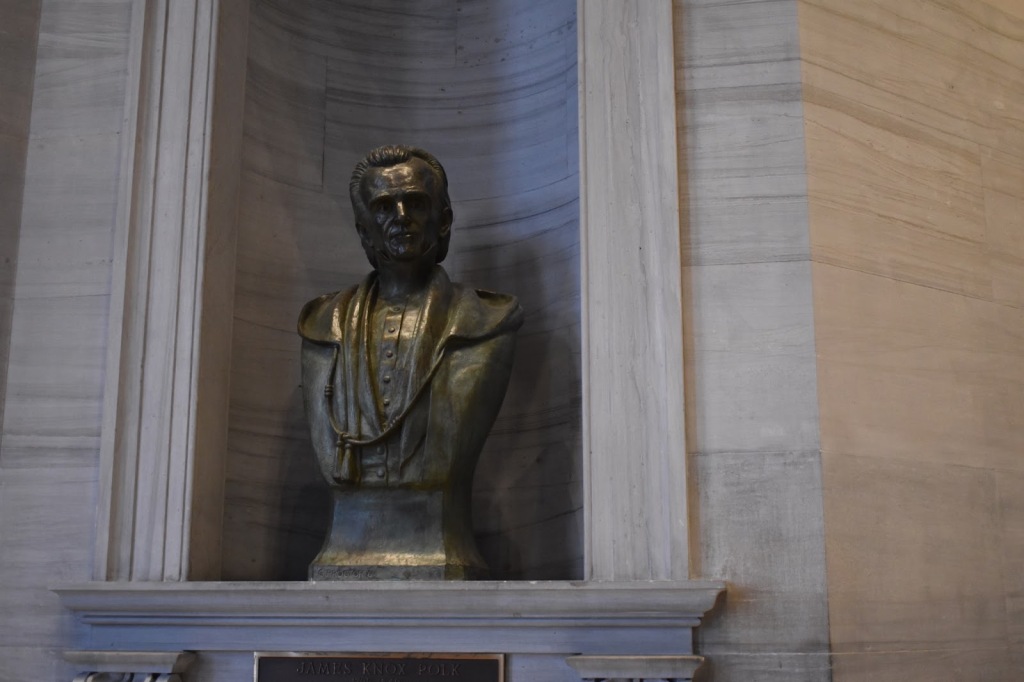Written by Angelina Taramona and Willa Smith
As we stroll along the streets of Nashville this weekend, we may take a moment to appreciate the architecture of Capitol Hill and its surrounding grounds. While admiring the two-story high limestone ceilings and wooden doors of the Capitol’s architecture, along with its 1800s roots and Grecian pillars, one may not guess that it has a haunted history.
Built in 1845 and officially opened in 1859, Tennessee’s state capitol has had a dark past since the architect William Strickland’s death in 1854. Strickland passed during the building of the Capitol and is now buried inside in a mausoleum under the Capitol floors, his “remains…[being] in the northeast wall,” says Chris Bungaard. The haunted halls of the Capitol have continued to grow over the years, as Strickland is not the only one buried within these walls. With him is Samuel Morgan, the Chairman of the Capitol Commission. The two had argued extensively over the project’s cost and design during their life, and when Strickland passed, it was Morgan who wanted his remains in the walls. Strickland did not remain in solitude for long, and Morgan was placed in the Southeast corner wall after his passing. The dueling architect’s relationship is embedded into the Capitol walls, and arguments are still heard by some even today.

The list of bodies does not end there, as the construction of the hill used slave labor to develop the $900,000 project. As construction was occurring, their bodies were buried under the building. Following the opening of the Capitol and during the ratification of the Fourteenth Amendment in 1866, there was a duel in the Capitol on the stairs between the first and second floors. Bullet holes and marks are still present in the Capitol walls, pillars, and railings, leaving their mark on history. This altercation stemmed from an argument in the legislature over the ratification of the 14th Amendment, which soon escalated into a bitter duel.

Stickland’s and Morgan’s voices are not the only notable voices heard throughout these grounds; with them lies the body of President James K. Polk, with the faces of many said to vanish in portraits around his tomb, which lies within the Capitol grounds. The former President died of cholera on the way back to Tennessee, where his grave wasn’t even completed till shortly after his passing, a result of his remains being too infectious to reside in the city’s graveyard. The state then built him his own tomb. His voice is said to be heard within the halls, and his figure can be seen walking around pillars and through doors.

The Tennessee state capitol is the only state capitol in the United States to double as a mausoleum, and with that comes the many accounts of experiences shared by visitors and government officials as they may hear or see the voices of Nashville’s lost souls that continue to haunt these limestone hallways. Think about it as you walk between Cordell Hull and Capitol Hill, and maybe you will hear or see them out of the corner of your eye.